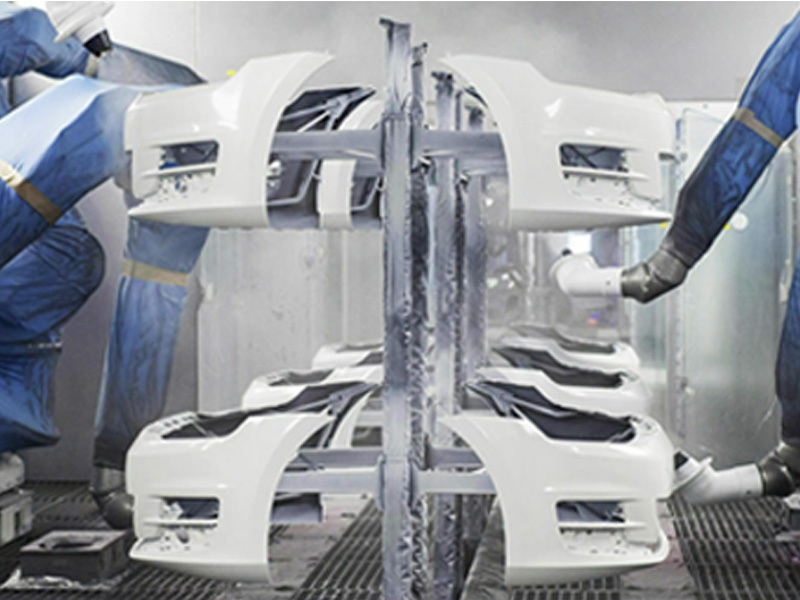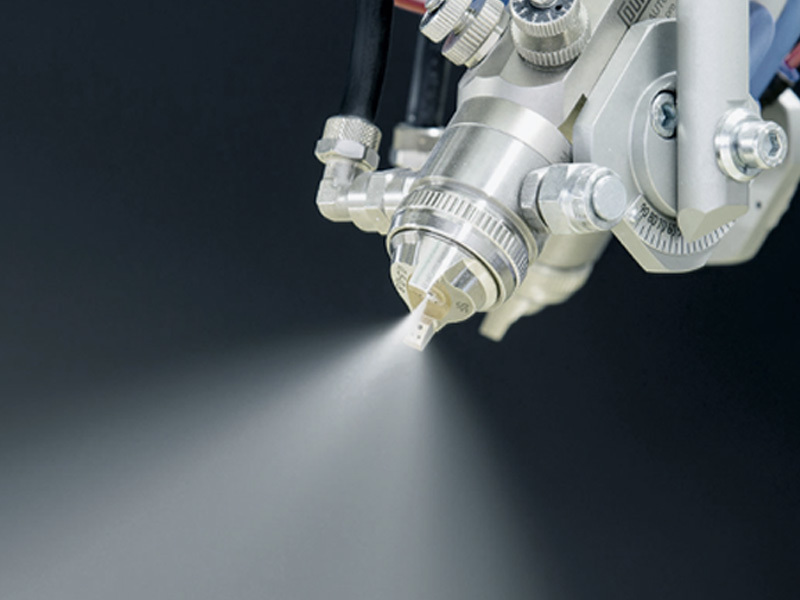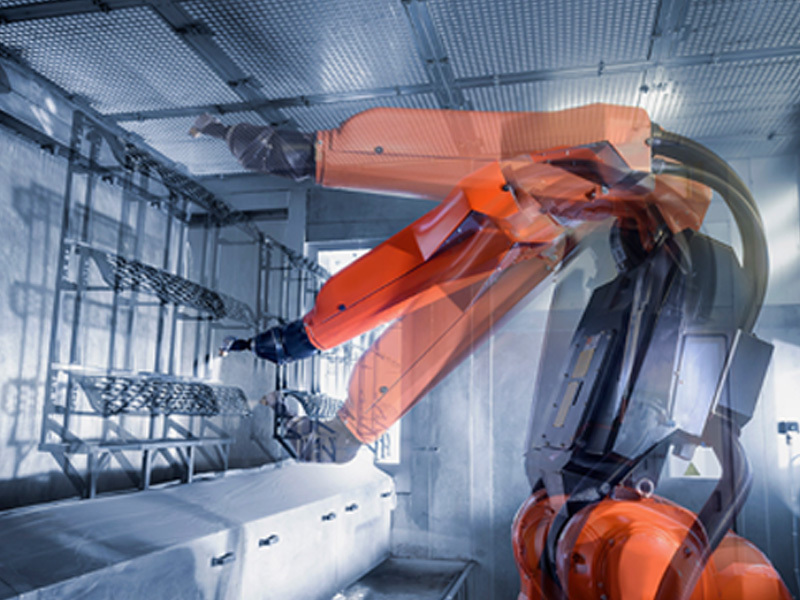Maximizing Paint Savings with High Yield Spraying Techniques: A Comprehensive Guide
Release time:
2025-06-26
Maximizing Paint Savings with High Yield Spraying Techniques Painting is an essential process in various industries, especially when it comes to industrial equipment and components. The method of application can significantly impact not only the aesthetic appeal of the finished product but also the overall cost efficiency. In this guide, we will explore **high yield spraying techniques** designed

Maximizing Paint Savings with High Yield Spraying Techniques
Painting is an essential process in various industries, especially when it comes to industrial equipment and components. The method of application can significantly impact not only the aesthetic appeal of the finished product but also the overall cost efficiency. In this guide, we will explore **high yield spraying techniques** designed to maximize paint savings while maintaining high-quality results.
Table of Contents
- 1. Introduction to High Yield Spraying
- 2. Benefits of High Yield Spraying Techniques
- 3. Selecting the Right Spraying Equipment
- 4. Effective Application Techniques
- 5. Choosing the Right Paint Formulation
- 6. Best Practices for Paint Application
- 7. Troubleshooting Common Issues
- 8. Conclusion
- 9. Frequently Asked Questions
1. Introduction to High Yield Spraying
High yield spraying techniques are designed to enhance the efficiency of paint application while minimizing waste. In an industry where every drop counts, implementing these strategies can lead to significant cost savings and improved product quality. By understanding **high yield spraying**, professionals can achieve better coverage, reduce overspray, and increase the overall effectiveness of their painting operations.
2. Benefits of High Yield Spraying Techniques
Adopting high yield spraying techniques offers numerous advantages, including:
1. **Reduced Paint Waste:** One of the primary benefits is the significant reduction in paint waste. By optimizing the spray pattern and technique, operators can ensure more paint reaches the intended surface.
2. **Cost Efficiency:** With less paint wasted, overall material costs decrease. This is particularly crucial in industries where paint is a significant expense.
3. **Improved Finish Quality:** High yield techniques often result in smoother finishes with fewer defects, leading to enhanced product quality and customer satisfaction.
4. **Faster Application Time:** These methods can expedite the painting process, thereby increasing productivity. A quicker turnaround time can lead to more projects completed within tight deadlines.
5. **Eco-Friendly Practices:** Reducing waste also contributes to more sustainable practices, aligning with environmental regulations and corporate responsibility goals.
3. Selecting the Right Spraying Equipment
Choosing the appropriate spraying equipment is critical for maximizing paint savings. Various factors influence this choice, including the type of project, the paint being used, and the desired finish.
3.1 Types of Spraying Equipment
There are several types of spraying equipment available, each with its benefits:
- **Airless Sprayers:** These are capable of applying high-pressure paint without air, resulting in a smooth finish and reduced overspray.
- **HVLP (High Volume Low Pressure) Sprayers:** These sprayers deliver a high volume of air at low pressure, producing an even spray pattern and minimizing paint wastage.
- **Electrostatic Sprayers:** Utilizing an electric charge, these sprayers ensure that paint adheres to surfaces more effectively, reducing overspray and improving efficiency.
3.2 Key Features to Consider
When selecting spraying equipment, consider the following features:
- **Nozzle Size:** The size of the nozzle impacts the flow rate and spray pattern. Choosing the right size can optimize paint savings.
- **Pressure Settings:** Adjustable pressure settings allow for customization based on the project requirements, helping to prevent overspray and improve coverage.
- **Ease of Cleaning:** Equipment that is easy to clean will save time and ensure that different paint formulations can be used without contamination.
4. Effective Application Techniques
To maximize the effectiveness of high yield spraying techniques, proper application methods are essential.
4.1 Surface Preparation
Before applying paint, ensuring that surfaces are adequately prepared is crucial. This includes:
- **Cleaning:** Remove dirt, grease, and previous coatings to ensure optimal adhesion.
- **Sanding:** Smooth out rough surfaces to prevent defects in the final finish.
- **Priming:** Depending on the substrate, applying a primer can enhance adhesion and improve the overall appearance of the paint job.
4.2 Spraying Methods Overview
Different spraying methods can be employed, including:
- **Cross Spray:** This involves spraying in a cross pattern to ensure even coverage. It minimizes areas of excess paint while maximizing coverage.
- **Overlap Techniques:** Overlapping each pass by 30% ensures that there are no missed spots, leading to consistent coverage.
- **Distance and Angle:** Maintaining the correct distance and angle from the surface is vital to achieving the desired finish while reducing overspray.
5. Choosing the Right Paint Formulation
The formulation of the paint itself can significantly affect the spraying process. Consider the following aspects:
- **Viscosity:** Paint that is too thick can lead to clogging and uneven application, while paint that is too thin may result in runs and drips.
- **Additives:** Using additives can enhance flow and leveling properties, making it easier to achieve a smooth finish with less paint.
- **Drying Time:** Selecting paint with appropriate drying times can help with workflow and reduce the chance of defects.
6. Best Practices for Paint Application
Implementing best practices is essential for achieving maximum paint savings. These include:
- **Regular Maintenance of Equipment:** Keeping sprayers and nozzles clean and well-maintained enhances performance and reduces waste.
- **Training for Operators:** Ensuring that all operators are trained in high yield techniques can significantly improve efficiency and quality.
- **Monitoring Environmental Conditions:** Factors such as temperature and humidity can affect paint application. Monitoring these conditions helps in achieving consistent results.
7. Troubleshooting Common Issues
Even with the best practices in place, issues can arise during painting. Here are solutions to some common problems:
- **Runs and Sags:** Often caused by applying too much paint at once. Adjusting the spray technique and reducing the amount of paint applied can help.
- **Orange Peel Texture:** This occurs when the paint dries too quickly or is applied from too far away. Ensuring a proper distance and environmental conditions can prevent this.
- **Poor Adhesion:** This can be addressed by ensuring proper surface preparation and using the correct primer where necessary.
8. Conclusion
Maximizing paint savings through high yield spraying techniques is a strategic approach that can lead to significant cost reductions and improved quality in various industrial applications. By selecting the right equipment, employing effective application methods, and adhering to best practices, professionals can enhance their painting processes while minimizing waste.
Investing in training and maintaining equipment will further solidify these gains, making high yield spraying not just a technique but a cornerstone of effective industrial painting.
9. Frequently Asked Questions
**Q1: What is the primary advantage of high yield spraying techniques?**
A: The primary advantage is the significant reduction in paint waste, leading to cost savings and improved finish quality.
**Q2: How do I choose the right type of sprayer for my project?**
A: Consider the size of the project, the type of paint, and the desired finish. Airless, HVLP, and electrostatic sprayers each have unique benefits.
**Q3: Can surface preparation impact the paint application process?**
A: Yes, proper surface preparation is crucial for optimal adhesion and finish quality.
**Q4: What common issues can arise during the spraying process?**
A: Common issues include runs, sags, and poor adhesion, often remedied by adjusting techniques and ensuring proper surface preparation.
**Q5: How can I ensure my equipment maintains optimal performance?**
A: Regular cleaning and maintenance, along with monitoring parts like nozzles and pressure settings, will help keep equipment in top condition.











